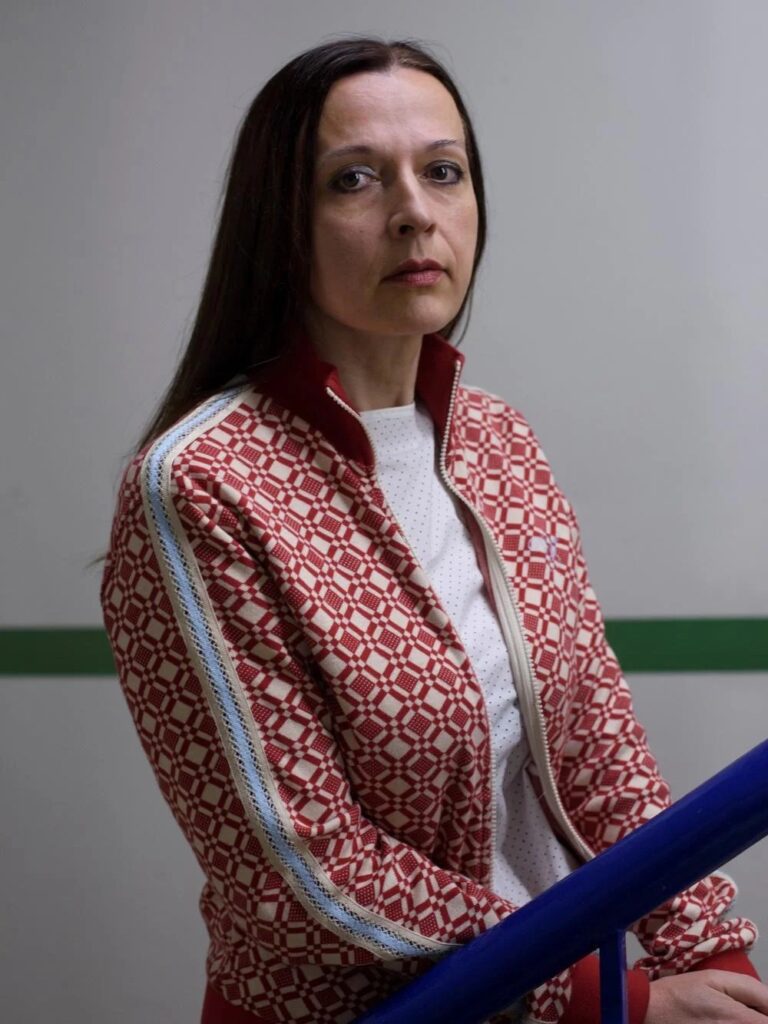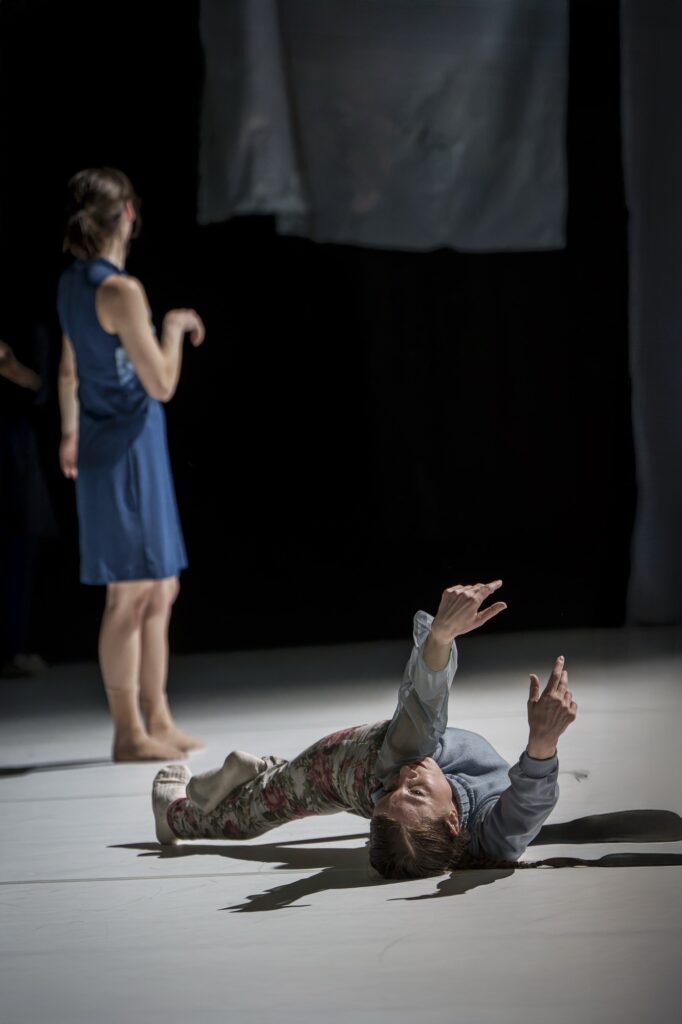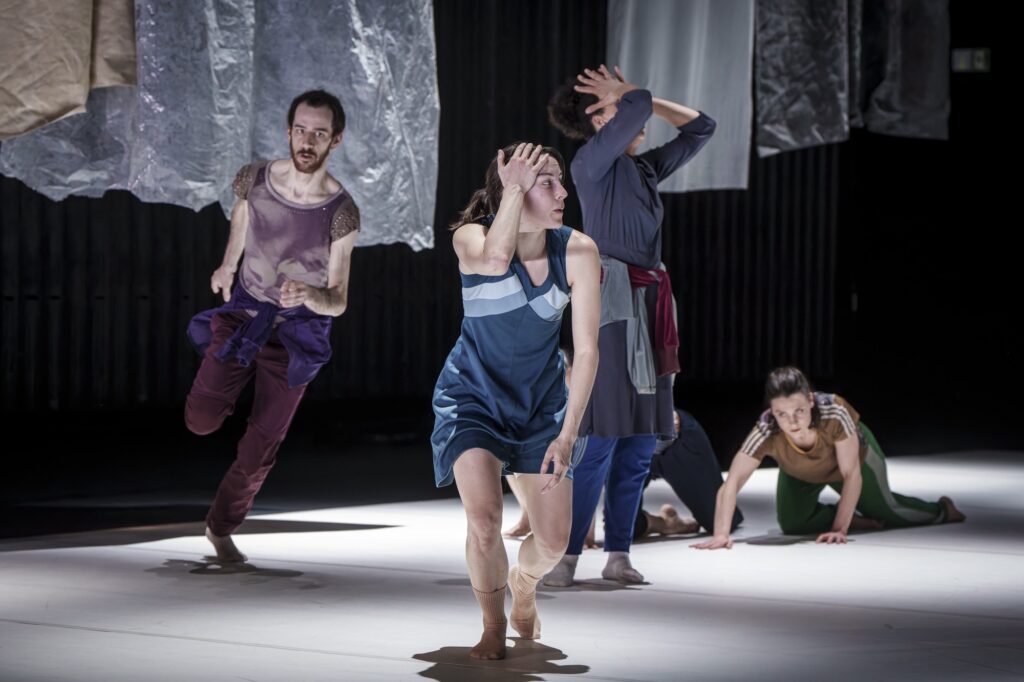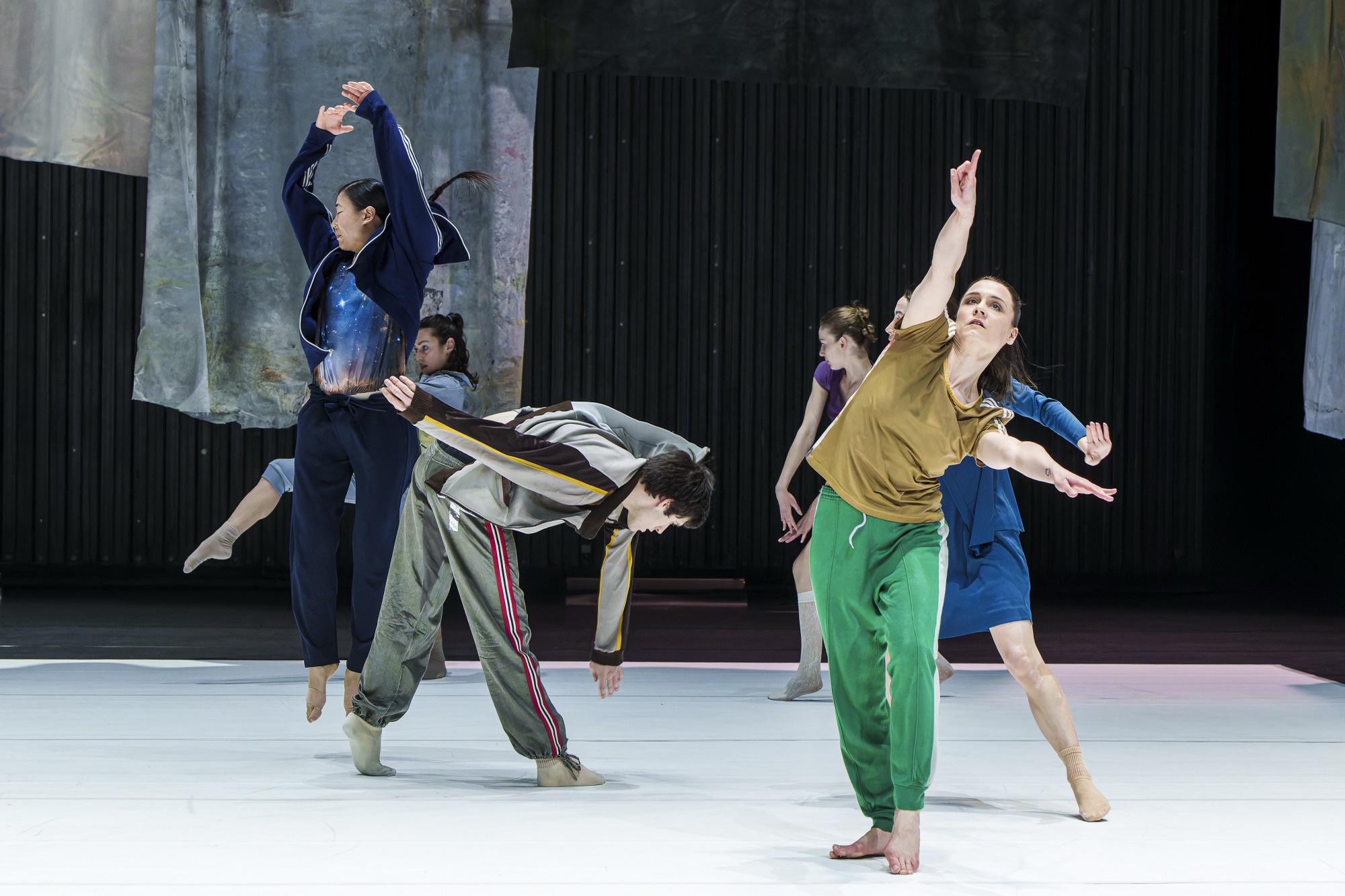Words by Maxine Flasher-Duzgunes.
For UK-based artists Vlatka Horvat and Tim Etchells, artmaking is a question of relation: an ongoing process of organizing ourselves with other bodies in space and time. In their first joint choreographic work, a new commission for Ballett Basel – Anders (Ballett Basel – Different), Go With Your Heart, premiering this week on Friday, March 21, Horvat and Etchells explore this question of relation with a cohort of sixteen dancers. Go With Your Heart also marks the final performance on the mainstage during the two-year artistic direction of Adolphe Binder, under the title Anders (Ballett Basel – Different). It is the culmination of a series of creations and adaptations that challenge and present a diverse array of forms and ideas (ideals) in dance and choreography. All the productions have and will be unique works created specifically for the ensemble, and by artists not seen before in Basel.
Upon coming to Basel last fall for the initial workshops that would determine the direction of the project, Horvat recalls how compelling it was for her and Etchells to witness the large group of dancers moving together and negotiating space inside a set frame. “We have each in our individual practices been working in different ways with questions around presence, the relation between bodies and space, and the dynamics at play between a frame for action that we construct and a set of processes and actions unfolding inside it,” she says. Etchells refers to the quote from Chantal Pontbriand’s essay on Richard Foreman’s theatre work “the eye finds no fixed point on which to rest” as a guiding principle for stage works where the dancers move in contrast to one another based on improvisational tasks.

These spatial propositions would eventually become the heart of the piece, which involves the act of copying as a tool for the generation and transformation of movement material. The dancers’ main task is to copy movement from each other in different ways, both in the moment it occurs as well as with delay and later from memory; they might work off a dancer who is right beside them, opposing them, or even furthest away, and in the process of making the movement their own they might transpose the plane from vertical to horizontal, they might use alternative body parts to the ones that were originally used, or they might take a stationary phrase and expand it across the entire length of the stage. “The effect, with additional rules and nuances we are adding for specific sections,” says Horvat, “is to frame the stage as a slightly delirious hall of mirrors in which every action or movement produces ripples, echoes, reactions and responses.” Etchells describes this translation of movement as a “very present, very visual-based process” that strips the dancers of their ability to move freely inside a score and instead filters their physical capabilities to only those that are based on what they see.
One particular section of the piece, which Horvat and Etchells call “social piano,” features groups of dancers gathering to share an activity, continuing to copy one another. As opposed to fragmenting the stage with each dancer isolated in their own movements, this section creates an endlessly collaging scene where the atmosphere “can be wild, grotesque fun one moment and melancholic collapse the next,” notes Etchells who cut samples from an old Tarantella recording that with its looping refrains, mimics how the dancers shift perpetually through motifs.

A recent section called “the swarm” evolved out of an improvisation where Horvat and Etchells would propose a set of rules and let the dancers move inside them. “The dancers are so good at inhabiting these structures we throw at them,” says Horvat, “at taking our instructions and rules and producing unexpected nuance and complexity as they work out their relation to the task.” This particular improvisation involved the dancers moving in a circle along the edge of the space. As they gathered momentum and started running, someone unintentionally tripped and fell. Because the nature of the piece is about copying movement, the others then began to intentionally copy the fall and the running turned into a persistent swarm of playful abandon – dancers falling and picking themselves up and falling again.
Since its early creation in rehearsals, “the swarm” has become a longer sequence where the dancers move in a variety of ways on a circular trajectory – jumping, crawling, sliding – sometimes dropping out of the moment, then rejoining the moving crowd as it passes by, other times standing in others’ way as obstacles. As if moving in and out of states of consciousness, the dancers find waves to follow and waves to resist, sometimes moving with the impulse of the group; other times stopping it at a moment’s notice. “I see so many different associations that come and go and never lock to produce a coherent narrative,” Horvat says. “It’s relentless and harrowing, but also has moments of calm and play and joy.”

As collaborators, Horvat and Etchells are constantly negotiating their directorial roles, and tend to do everything together without formal division of tasks. “There’s a loose rhythm of one leaning forward, the other leaning back,” says Etchells, “We each bring a different set of eyes to this process, different impulses and differently sharpened focus on particular things that emerge in the rehearsal studio.” And having worked together before on many different projects, they share a common language, and often use one another as a sounding board, discussing and problem solving ideas together, asking questions that move their making processes forward.

Both choreographers are interested in activating space and inhabiting the possibilities that emerge from an imagined world while grounded in a physical one. Dancers are not always given agency in choreographed pieces, and so a production like this not only functions as a welcoming force amidst the often rigid structures in which dancers frequently operate, but an opportunity to find new pathways, new frames, and new edges in their skilled practice. Through movement that comes and goes, Go With Your Heart drills deeply into questions about how movement shifts when transmitted from body to body, and how in real time it has the potential to morph into something unexpected…
For tickets and more information on Ballett Basel, visit: https://www.theater-basel.ch/de/gowithyourheart.
Header image by Ingo Hoehn. Pictured: Jin-Young Won, Giulia Torri, David Lagerqvist, Yaëlle CHassin, Amy Josh, Sophie Vergères.
